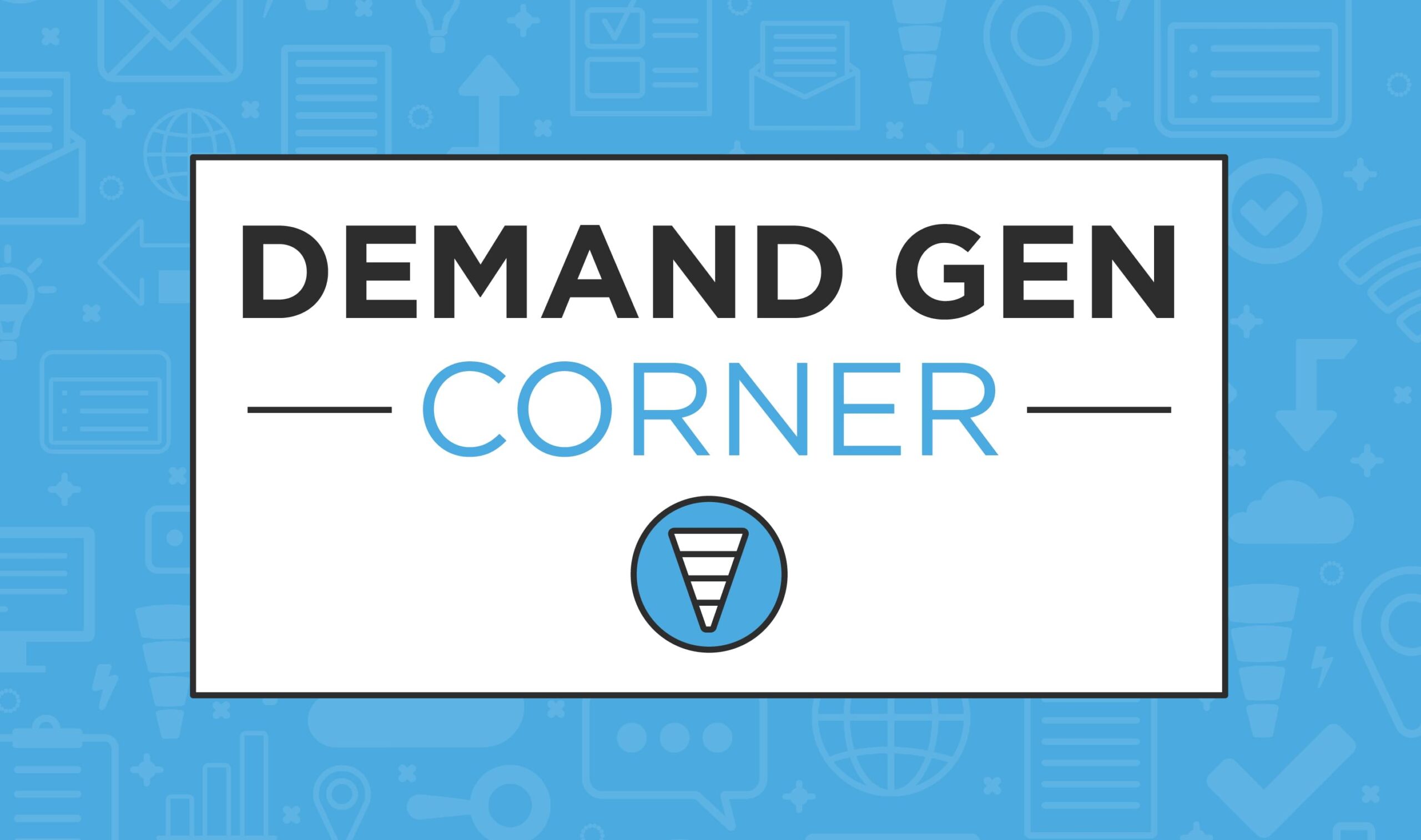The B2B world has been talking about account-based marketing (ABM) for a while now, and many of the industry’s more forward-thinking companies are already on board.
According to eMarketer, 80 percent of B2B marketers say they have an ABM strategy in place or plan to launch one in the next 18 months. Even so, most practitioners are still new to the craft — testing tactics and learning what works best. The same study found that 59 percent of marketers have only been using account-based strategies for a year or less.
If you’re new to the concept or intimidated by the idea of launching your own campaign, you’re in good company. Don’t let that keep you from trying ABM, or at the very least, entertaining some of the theories behind it. In this second installment of our Demand Gen Corner Blog Series, we’ll explore the differences between traditional lead gen and ABM, available software tools on the market, and best practices for building your strategy.
ALSO READ: Account-Based Marketing Crash Course: 4 Basic Steps
To add some perspective to this piece, we sat down with Sangram Vajre — CMO of Terminus and veritable Godfather of ABM. Sangram is also widely known for his leadership of the revolutionary #FlipMyFunnel movement, which suggests, as it sounds, that marketers should flip the purchase funnel upside down.
Traditional Lead Gen vs. Account-Based Marketing

Before you start sending pajamagrams to to your big-fish accounts, it’s important to understand why ABM is useful and what advantages is offers over traditional lead gen. At the most basic level, ABM acknowledges that important purchase decisions are made by groups of stakeholders with conflicting priorities, so the sales process shouldn’t be a broad effort to attract and convert thousands of individual leads. According to CEB, the average B2B purchase involves 5.4 decision-makers.
If you look at a traditional purchase funnel, its tragic flaw is apparent: marketing teams spend a lot of money on campaigns that attract a high volume of leads, but by the end of the process, only a select few convert.
 The account-based approach addresses this problem by starting small, identifying specific target accounts and decision-influencers within those accounts, then building consensus among the buying group through personalized campaigns and outreach. Hence, the “flipped funnel” model.
The account-based approach addresses this problem by starting small, identifying specific target accounts and decision-influencers within those accounts, then building consensus among the buying group through personalized campaigns and outreach. Hence, the “flipped funnel” model.
Is this approach positioned to replace traditional lead generation completely? The answer is complicated, but Sangram says yes.
“In SiriusDecisions’ 2016 State of Account Based Marketing (ABM) Study, 27 percent of respondents said they were devoting between 11 percent and 30 percent of their total marketing budget to ABM,” he says. “This metric was up from 19 percent in 2015.
“ABM is getting back to the roots of what B2B marketing is supposed to be. We were never supposed to do marketing based on leads, because there are several influencers and stakeholders in an account. B2B marketing is about driving revenue for sales, focusing on best-fit accounts, influencing multiple decision-makers in the process, talking to different stakeholders to understand their pain points, then delivering a solution that truly fits the needs of the customer.”
ABM is getting back to the roots of what B2B marketing is supposed to be.
To be clear, Sangram isn’t suggesting complete abandonment of the best practices B2B marketers have held true for decades: we will always need prospecting, content marketing, and a system for nurturing leads. But these processes can yield a much larger return when they focus on “best-fit accounts.”
Even as companies move away from the wide top-of-the-funnel approach and closer to ABM, they still to collect need names and firmographic data. Sangram suggests a four-step model for this process, based on the philosophy behind #FlipMyFunnel:
- Identify
- Expand
- Engage
- Advocate
- Measure
“To do ABM, start with Identify,” he says. “Look at your existing customer base to define your ideal customer profile (ICP). Knowing who your best-fit customer accounts are will help your marketing team to decide what types of companies you want to go after.
“Predictive analytics examines companies that are your current customers to find similar companies in your CRM that would also be a good fit. Imagine if you’re an established company with 500 or 1,000 customers, and you closed 100 of those customers within the last year. Predictive analytics can find all the other companies . . . that match the same criteria. This is called historical back-testing. Predictive analytics takes your data to analyze similarities from your current customer data and your ideal new accounts.”
Of course, when you’re working with an upside-down funnel and trying to generate demand among a buying group, you’ll need to use a different approach for outreach and messaging. “Solution-selling in B2B is more about tailoring your products and services to the needs of your buyers,” Sangram says. “It’s not like a consumer sale; you have 10 different people wanting 10 different solutions.”
Account-Based Marketing Technology
Like many other categories of “martech” the ABM software category has exploded in recent years. In part, this new wave of technology has been responsible for bringing marketers in the loop on account strategies.
There are many ways to break down the market, but most heavyweight ABM solutions fall into one of three categories:
- Predictive analytics: for account identification, data mining, and account mapping (e.g. Everstring, Infer)
- Marketing automation: store and track data related to accounts and leads; run email and web campaigns (e.g. Marketo, Eloqua, HubSpot, Act-On)
- Advertising Automation: personalized advertising and retargeting, at the account level; show specific ads to visitors based on their IP address (e.g. Terminus, Demandbase, Azalead, Engagio)
ALSO READ: The Lead Generation Technology Stack
Even with a cutting-edge software stack, account-based marketing is nothing without a carefully-crafted strategy.
“A new tool won’t grow revenue for your company,” Sangram says. “You need a comprehensive strategy, aligning all the departments in your company. You have to really care about your accounts — both your customers and prospects. ABM communication has to be tailored based on the message for each contact in the account. That’s something software can’t always do.”
Orchestrating an effective ABM campaign requires both a personal touch and the scale/automation enabled by technology. According to Sangram, a lot of this revolves around marketing automation. “[Marketing automation] allows you to batch-and-blast, but if not used properly, it can turn into spam. If you’re using a marketing automation platform to do ABM, you have to make sure your account data is refined and segmented to laser focus on your contacts’ interests. A CEO in an account will want a different message than a marketing coordinator. This is where internal alignment at your company, particularly between sales and marketing, is so crucial.”
The Ideal Customer Profile
The same way that traditional lead generation uses individual buyer personas to drive content and campaigns, account-based marketing uses an ideal customer profile (ICP). Your ICP should describe the characteristics of accounts that would be a good fit for your product or service. Try to base this profile on your current customer list, using the data in your CRM software.
Here are the essentials that Sangram recommends including:
- Industry: the vertical or market segment you’re targeting
- Company Size: SMB, Mid-Market, Enterprise (if you’re a SaaS vendor, this is especially important because of scale)
- Department: the departments in your existing customer accounts that are using your solution. This is important for ABM if you’re attempting to cross-sell or upsell a current customer
- Role: What responsibilities or job functions does your solution target? The titles of the people in the account using your solution is especially important for the ICP as you move on to build personas.
You may also want to include geographic location (depending on your product) and technographics (what solutions does the account currently have in place) in your ideal customer profile.
All of these attributes dictate an account’s lifetime value potential, so they should directly inform the way your marketing and sales teams prioritize campaigns — ideally, to target the biggest opportunities first.
After you build a functional ICP, use it as a template to build your target account list — either by qualifying new account prospects as they enter the funnel, or by pairing ICP with a predictive analytics tool to guide lead acquisition. In addition to running your own campaigns, you’ll have plenty of data vendor options here:
Some ABM platforms may even include their own prospecting component to help you identify decision-makers/influencers and map out buying groups faster.
Scaling ABM
As you learn more about ABM, you may think, “This sounds great, but it’ll never scale,” which is another way of saying ABM sounds super complicated and expensive. That may be true, but it’s also very effective. A recent Demandbase study found that ABM close rates for targeted enterprise accounts were 285 percent higher, versus traditional tactics.
“Lead generation did a good job of trying to find new leads across a variety of sources,” Sangram says. “What’s different for ABM is that it opens up these same channels in one, coordinated program.
“ABM aligns marketing to support sales as they call on those accounts. Marketing can serve up advertising using a solution like Terminus while also sending direct mail, inviting prospects to events, you name it. Once you determine what works for engaging and converting target accounts, you can build a repeatable process and scale from there.”
* * *
If you’re interested in learning more about building and launching an actual ABM campaign, download our free e-book below. You’ll learn everything you need to know about building your technology stack, identifying target accounts, and planning specific tactics that successfully engage the buying group.
In our next Demand Gen Corner piece, we’ll take a closer look another incredibly effective B2B strategy: event marketing. Stay tuned each week for new installments that provide practical advice and strategies from industry leaders. Learn how to generate qualified leads and convert more new business.







